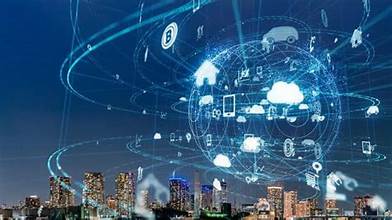Smart Grid Technology
As we stand on the brink of 2035, the world of energy is undergoing a profound transformation, and at the heart of this revolution is smart grid technology. Over the past few decades, smart grids have evolved from conceptual frameworks to integral components of our energy infrastructure. In this blog, we’ll delve into the fascinating realm of smart grid technology, exploring the advancements, benefits, and the potential landscape of 2035.
I. The Evolution of Smart Grids:
a. Foundations and Early Adoption: The journey of smart grids began with the integration of digital technology into traditional power systems. The aim was to enhance efficiency, reliability, and sustainability. Early adopters focused on incorporating advanced metering infrastructure (AMI) and sensors into the grid to collect real-time data.
b. Advanced Communication Networks: As we approach 2035, smart grids are characterized by robust communication networks. High-speed, low-latency connections enable seamless interaction between various components of the grid, fostering quick decision-making and response mechanisms.
c. Integration of Renewable Energy: One of the pivotal shifts in smart grid evolution has been the integration of renewable energy sources. In 2035, smart grids act as dynamic platforms that efficiently manage the intermittent nature of renewables, balancing supply and demand in real-time.
II. Key Components of Smart Grid Technology in 2035:
a. Advanced Metering Infrastructure (AMI): Smart meters have become ubiquitous in 2035, providing consumers with real-time insights into their energy consumption. These meters not only enable accurate billing but also empower consumers to make informed decisions about their energy usage.
b. Distributed Energy Resources (DERs): The rise of DERs, including solar panels, wind turbines, and energy storage systems, has reshaped the energy landscape. Smart grids seamlessly integrate and manage these distributed resources, optimizing their contribution to the overall energy mix.
c. Predictive Analytics and Artificial Intelligence (AI): In 2035, smart grids leverage AI and predictive analytics to forecast energy demand, identify potential faults, and optimize grid operations. Machine learning algorithms continuously learn from data patterns, enhancing the grid’s ability to adapt to dynamic conditions.
d. Grid Edge Technologies: The grid edge, where consumers and distributed energy resources interact with the grid, is a focal point in 2035. Technologies such as edge computing and advanced sensors at the grid edge enable localized decision-making, reducing latency and improving overall grid responsiveness.
III. Benefits of Smart Grid Technology in 2035:
a. Enhanced Reliability: The reliability of power systems has significantly improved with smart grid technology. Advanced monitoring and control mechanisms identify and address issues in real-time, minimizing downtime and enhancing the overall resilience of the grid.
b. Energy Efficiency: The optimization of energy distribution and consumption is a hallmark of smart grids in 2035. Through smart meters, real-time pricing, and demand response programs, consumers actively participate in energy conservation, contributing to a more efficient and sustainable energy ecosystem.
c. Decentralized Energy Production: Smart grids have empowered individuals and communities to actively participate in energy production. Localized generation and storage reduce dependence on centralized power plants, fostering a more resilient and democratic energy infrastructure.
IV. Challenges and Solutions:
a. Cybersecurity Concerns: With increased connectivity, cybersecurity becomes a paramount concern. In 2035, advanced encryption, secure communication protocols, and continuous monitoring mitigate cybersecurity threats, ensuring the integrity of the smart grid.
b. Interoperability: The seamless integration of diverse technologies and systems is crucial for the success of smart grids. Standardization efforts and open communication protocols facilitate interoperability among various components, promoting a cohesive and efficient grid ecosystem.
V. The Future Landscape:
a. Electrification of Transportation: In 2035, the electrification of transportation is a major driver of change. Smart grids play a pivotal role in supporting the increased demand for electric vehicles, managing charging infrastructure, and optimizing energy usage across the transportation sector.
b. Community Microgrids: Community-based microgrids, powered by smart grid technology, are a common sight in 2035. These microgrids enhance local resilience, provide energy security, and enable communities to operate independently during grid outages.

c. Grid as a Service (GaaS): The concept of “Grid as a Service” has gained prominence, allowing users to access and utilize grid services on-demand. This pay-as-you-go model enables flexibility, scalability, and increased accessibility to energy resources.
VI. Conclusion: A Smarter, Greener Tomorrow
In conclusion, smart grid technology in 2035 represents a paradigm shift in how we produce, distribute, and consume energy. The integration of advanced technologies, coupled with a consumer-centric approach, has paved the way for a more sustainable, resilient, and intelligent energy future. As we continue to harness the potential of smart grids, the prospect of a cleaner and more efficient global energy ecosystem beckons, promising a brighter tomorrow for generations to come.